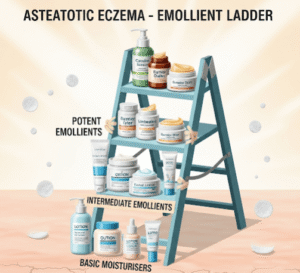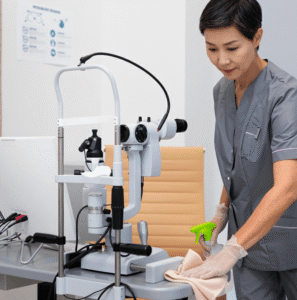Overview
Glossitis refers to inflammation of the tongue, which can manifest as swelling, color changes, and alterations in texture. While not among the most common oral conditions in Korea, it poses significant health concerns due to its association with underlying systemic conditions and potential complications.
What is Glossitis?
Glossitis involves inflammation of the tongue, which may present as:
- Geographic Tongue (Benign Migratory Glossitis): Characterized by map-like lesions with red patches and white borders.
- Median Rhomboid Glossitis: A smooth, red area at the back of the tongue.
- Fissured Tongue: Deep grooves or fissures on the tongue’s surface.
- Atrophic Glossitis: Loss of papillae, leading to a smooth, shiny tongue.
Symptoms
Common symptoms of glossitis include:
- Swelling or enlargement of the tongue
- Color changes, such as redness or paleness
- Pain or sensitivity, especially when eating certain foods
- Smooth or shiny appearance due to loss of papillae
- Cracking or fissures on the tongue’s surface
Causes
Glossitis can result from various factors, including:
- Nutritional Deficiencies: Lack of vitamins B12, folic acid, iron, or zinc.
- Infections: Fungal infections like oral candidiasis.
- Allergic Reactions: Sensitivity to certain foods, medications, or oral hygiene products.
- Systemic Conditions: Such as anemia, diabetes, or autoimmune diseases.
- Trauma: Physical injury or irritation from dental appliances.
Risk Factors
Individuals at higher risk for developing glossitis include:
- Those with poor dietary habits or malnutrition
- People with compromised immune systems
- Individuals with chronic medical conditions
- Smokers and alcohol users
- Denture wearers or those with poor oral hygiene
Complications
If left untreated, glossitis can lead to:
- Difficulty eating or speaking
- Increased risk of oral infections
- Potential progression to more severe systemic conditions
Prevention
Preventive measures include:
- Maintaining a balanced diet rich in essential vitamins and minerals
- Practicing good oral hygiene
- Avoiding known allergens and irritants
- Regular dental check-ups
- Managing underlying health conditions effectively
Treatment Options in Korea
General Management
- Topical Treatments: Application of corticosteroid gels or antifungal creams.
- Oral Medications: Use of antifungal agents like fluconazole for candidiasis.
- Pain Relief: Over-the-counter analgesics to alleviate discomfort.
- Dietary Adjustments: Incorporating vitamin-rich foods and supplements.
Specialized Care in Korea
- Medical Centers: Institutions like Seoul National University Hospital and Asan Medical Center offer specialized care for glossitis and its underlying causes.
- Oral Health Clinics: Provide comprehensive dental care and management of oral mucosal conditions.
Public Health Measures
- Awareness Campaigns: Educating the public about the importance of oral health and nutrition.
- Screening Programs: Regular screenings for nutritional deficiencies and systemic diseases.
- Research Initiatives: Ongoing studies to understand the epidemiology and treatment of glossitis in the Korean population.













